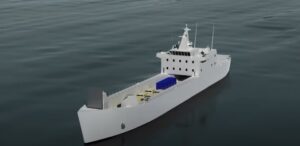
The Navy is seeking industrial information from potential medium landing ship (LSM) producers on their ability to build the new ships, with a special interest of building up to four annually, in a recent request for information (RFI). According to the May 17 RFI, the Naval Sea Systems Command (NAVSEA) is “seeking to understand industrial sources interested in the Detail Design and Construction (DD&C) of the Medium Landing Ship (LSM).” The RFI is seeking information on several questions with implications…

 By
By 











